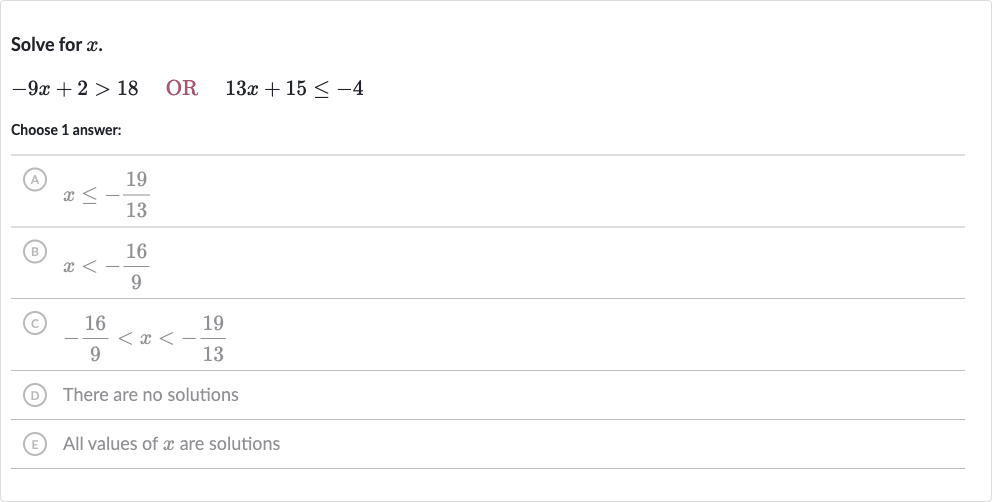Full solution
Q. Solve for .Choose answer:A) (B) (c) (D) There are no solutions(E) All values of are solutions
- Solve inequality -9x + 2 > 18: First, let's solve the inequality -9x + 2 > 18.Subtract from both sides to isolate the term with .-9x + 2 - 2 > 18 - 2-9x > 16Now, divide both sides by . Remember that dividing by a negative number reverses the inequality sign.x < -\frac{16}{9}
- Isolate the term with x: Next, let's solve the inequality .Subtract from both sides to isolate the term with x.Now, divide both sides by to solve for x.
- Divide both sides by : Now we have two inequalities to consider:x < -\frac{16}{9} and .We need to find the intersection of these two sets to find the solution for .The number is less than , so the solution set for is the values that are less than and also less than or equal to .This means that the solution set is x < -\frac{16}{9}, as it is the more restrictive condition.
More problems from Domain and range of quadratic functions: equations
QuestionGet tutor help
QuestionGet tutor help
QuestionGet tutor help
QuestionGet tutor help
QuestionGet tutor help
QuestionGet tutor help
QuestionGet tutor help
QuestionGet tutor help

